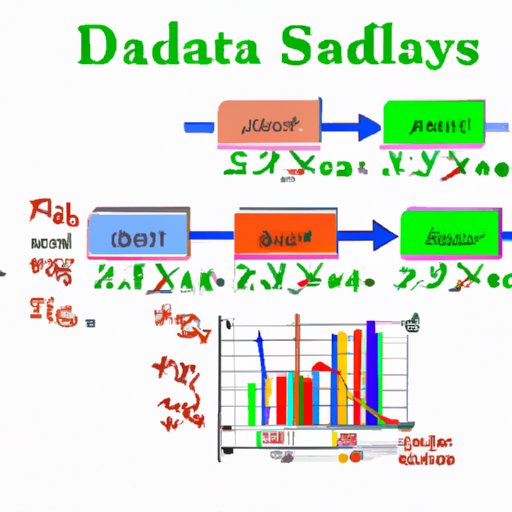Introduction
Have you ever heard of standard deviation? It might sound intimidating, but it’s actually a very important statistical tool used to analyze and interpret data. Standard deviation measures the amount of variability or spread in a set of data. It’s a crucial aspect of understanding and summarizing data in fields ranging from science to economics. In this article, we will dive into how to find standard deviation, including both basic and advanced methods, tips for simplifying the process, and real-life examples of why it matters.
The Basics of Standard Deviation
Standard deviation is a measure of how much variance or spread there is in a set of data. Simply put, it tells you how much the data deviates from the mean or average. It is widely used in statistics, data analysis and inferential analysis. Standard deviation is important mainly due to its ability to help you make more informed decisions when working with data, looking at how the data behaves, and its distribution.
Understanding Variance
Variance is the square of the standard deviation. It represents the average squared distance that individual data points on a graph are from the mean. Variance is used to describe the variability in the data and is widely used to measure the spread in a given data set. Variance tells you how spread out the data is, while standard deviation measures the magnitude of the spread. Therefore, when we want to find standard deviation, we usually calculate variance first.
Step-by-Step Guide to Finding Standard Deviation
Now, let’s take a look at how to find standard deviation step-by-step.
Step 1: Calculate the mean (average) of the data.
Step 2: Calculate the squared differences (the differences between each data point and the mean, squared) for each data point.
Step 3: Calculate the average of the squared differences. This is the variance.
Step 4: Take the square root of the variance to find the standard deviation.
For example, let’s say we have a data set of test scores: 75, 80, 85, 90, and 95.
Step 1: Calculate the mean: (75+80+85+90+95)/5 = 85.
Step 2: Calculate the squared differences for each data point: (75-85)^2 = 100, (80-85)^2 = 25, and so on.
Step 3: Calculate the average of the squared differences: (100+25+0+25+100)/5 = 50.
Step 4: Take the square root of the variance: sqrt(50) = 7.07.
Simplify Statistical Analysis: How to Quickly Find Standard Deviation
Calculating standard deviation can be complex and time-consuming, especially if you have large data sets. Fortunately, there are some tips and shortcuts you can use to simplify the process:
- Use spreadsheet software to calculate standard deviation automatically. For example, Microsoft Excel has a built-in function called STDEV that can do the job quickly and easily.
- If you need to find standard deviation by hand, use shortcuts to simplify the calculation. For example, Chebyshev’s theorem can be used to find a minimum estimate of the standard deviation. It states that at least 75% of all results from any data set occur within two standard deviations from the mean, and at least 89% of the data set is within three.
- Remember to use the sample standard deviation formula if your data set is a sample of a larger population, rather than the full population itself. It is calculated slightly differently from the formula used for a complete population.
Why Standard Deviation Matters and How to Calculate It
Standard deviation is a crucial statistic used in analyzing data because it can tell you how reliable the data is. A small standard deviation suggests that the data points are all close to the mean, while a large standard deviation indicates that the data is more spread across a range of values. In many cases, standard deviation can be used to detect potential issues with data quality and help statisticians make informed decisions about how to handle outliers or unexpected results.
For example, suppose we are analyzing the average monthly sales for a particular company over the course of a year. If the standard deviation is low, we can be confident that sales figures remained fairly consistent throughout the year. In contrast, if the standard deviation is high, it indicates that the sales figures fluctuated significantly over the year, with highs and lows that are difficult to predict or manage.
Diving Deeper into Data Analysis: How to Find Standard Deviation
If you’re looking to dive even deeper into data analysis and learn more advanced methods of calculating standard deviation, there are many statistical software programs that can help. These tools can handle large data sets more efficiently than manual calculations, and can often perform advanced analyses and visualizations as well. Popular statistical software packages include R, SAS, and SPSS.
Conclusion
Standard deviation is a powerful tool that can help you understand and interpret data more effectively. With the step-by-step guide outlined in this article, you should be able to calculate standard deviation with ease. Remember, there are also shortcuts and advanced methods available once you’re comfortable with the basics of the process. Knowing how to find and interpret standard deviation is essential for anyone who works with data, whether in science, economics, or any other field.
